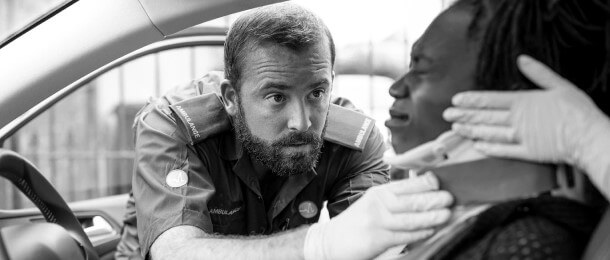Why SEO is not a “set it and forget it” strategy for law firms
When you work with a reputable agency like dNovo Group to optimize your law firm website, expect your traffic to...
Sidewalks and other pedestrian pathways on city property can often be icy, dangerous, or in states of disrepair, which may cause people to slip and fall. If you’ve suffered such an accident on city property, you’re probably unsure of what to do. This blog post will provide a quick snapshot of the laws surrounding injury claims against municipal entities in Ontario, as well as general directions on what you should do should you find yourself in this situation.

One of the most important things to keep in mind is the 10 day stipulation outlined in the Municipal Act, at section 44(10). This condition requires that for a claim to succeed against the municipality, written notice including the date, time and location of the occurrence must be provided to the city within 10 days after the accident and sent by registered mail to the clerk of the municipality. Failure to do so may void your claim!
Section 44(9) of the Municipal Act outlines that when dealing with snowy/icy conditions on a municipal sidewalk, the standard of care is gross negligence, as opposed to the ordinary standard of care of just “negligence”. What does this mean? It means that because winters are rough and there is far too much municipal ground to cover out there, municipalities have to be cut a little bit of slack. Though a party who falls on private property only has to prove that an occupier was negligent in causing them to slip and fall, a municipal entity has to be found grossly negligent in causing the slippery hazard or they will not be held liable for personal injuries arising out of a fall on a sidewalk due to snow or ice. This means that not all slips and falls on city property may be eligible for a claim. While the courts do not have a black and white definition, it is clear that in order for there to be “gross negligence”, there must be more than a minor breach of the duty of care. The negligence must rise to a high level of misconduct, which makes it a more difficult case to prove. Whether or not your case is one of gross negligence will depend on the facts and circumstances (Crinson v Toronto).
If you have been injured in a slip and fall, it is very important to seek immediate medical attention, first and foremost. It is also very important to preserve and gather all of the relevant evidence. Taking pictures of your injuries, damage to your property, and especially of the fall location will be imperative for properly preparing your case. Take into account the where, when, and how the accident occurred. Is the sidewalk or laneway located on private or public property? Did the fall happen as a result of maintenance work in the area? Snow and/or ice? What was it exactly that caused you to fall? Where exactly did you fall? Were you watching where you were going? Were you in a rush? Wearing the appropriate footwear for the weather conditions? Furthermore, take note of any potential witnesses, visible security cameras, and, do not dispose of the footwear you were wearing at the time of the fall! Contact a lawyer at Grillo Law, so that we can help you make sense of these questions and construct a strong case.
The usual heads of damages available in ordinary injury claims are also available in municipal claims. For example, you can claim compensation for your pain and suffering, recovery of medical rehabilitation and housekeeping expenses, recovery of lost wages as well as future losses of income, etc. Experienced professionals at Grillo Law will help you determine the range of damages that you may be eligible to claim.
The following are a few examples of previous slip and fall cases that have occurred in Ontario. While your situation will be unique, it may be helpful to use these cases as a general guideline of what the courts consider a breach of the city’s municipal duty of care in different circumstances.
Slater v Toronto: The Court made clear in this case that the plaintiff has the onus, or responsibility, to establish non-repair and causation. If the plaintiff can prove that there was a state of non- repair on the sidewalk and that it was the cause of the injuries, then the onus shifts onto the city. The city can defend by saying that it could not reasonably know of the non- repair, or that it took reasonable steps to prevent the state of non- repair.
As a general rule, the courts will be reluctant to find a state of non- repair unless the crack or damage to the sidewalk is greater than 3/4 of an inch. For more advice on this, seek professional expertise.
Kirwan v London: The plaintiff slipped and fell on a portion of the sidewalk where there was a deviance of approximately 1 to 2 inches (as proven by the photographic evidence). The court deemed that this sidewalk was in a dangerous condition. The city’s guidelines were to inspect the sidewalks every 5 years. Here, the court found that this inspection schedule was not acceptable and found the municipality partially liable.
Guy v Toronto was a case where the plaintiff slipped and fell on a city laneway. The court found that the city knew or should have known that the icy laneway was a hazard to pedestrians. Further, there should have been foot patrollers in the area to discover the ice hidden under the snow. Because of this gross negligence, the city was found liable.
If you have suffered injuries from a slip and fall accident on city property, you must contact an experienced lawyer at Grillo Law. Our team of lawyers can offer a wealth of services to assist you in recovering your damages and losses to the full extent of the law. This will include advising you on the case’s prospects, delivering initial notice to the correct municipal clerk within the timelines prescribed by the law, issuing and serving a Statement of Claim on your behalf, and much more.

Blog
When you work with a reputable agency like dNovo Group to optimize your law firm website, expect your traffic to...
Examination for discovery is a critical and important part of the litigation process. At an examination for discovery parties will...
by Stefanie PereiraHow Car Accident Tort Settlements Work in Ontario Fact scenario: Mrs. A is a 63 year old woman living in...
by Moussa Sabzehghabaei
Request a free consultation!
Call us today for a FREE consultation regarding your accident benefits claim.
Call: +1 855-225-5725
You will not pay any fees
until your case is won or settled
REQUEST A FREE CONSULTATION!
You will not pay any fees until your case is won or settled.
Thank you!
Amet minim mollit non deserunt ullamco est sit aliqua dolor do amet sint. Velit officia consequat duis enim velit mollit.